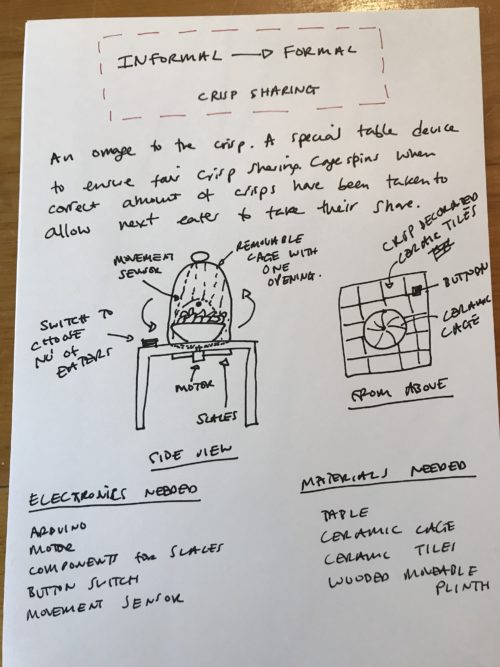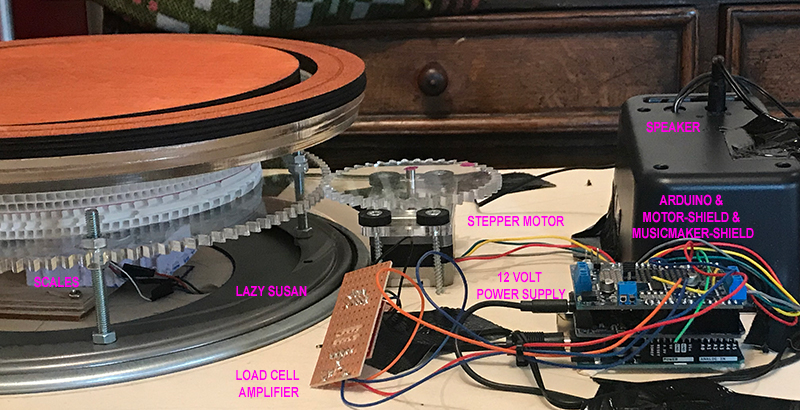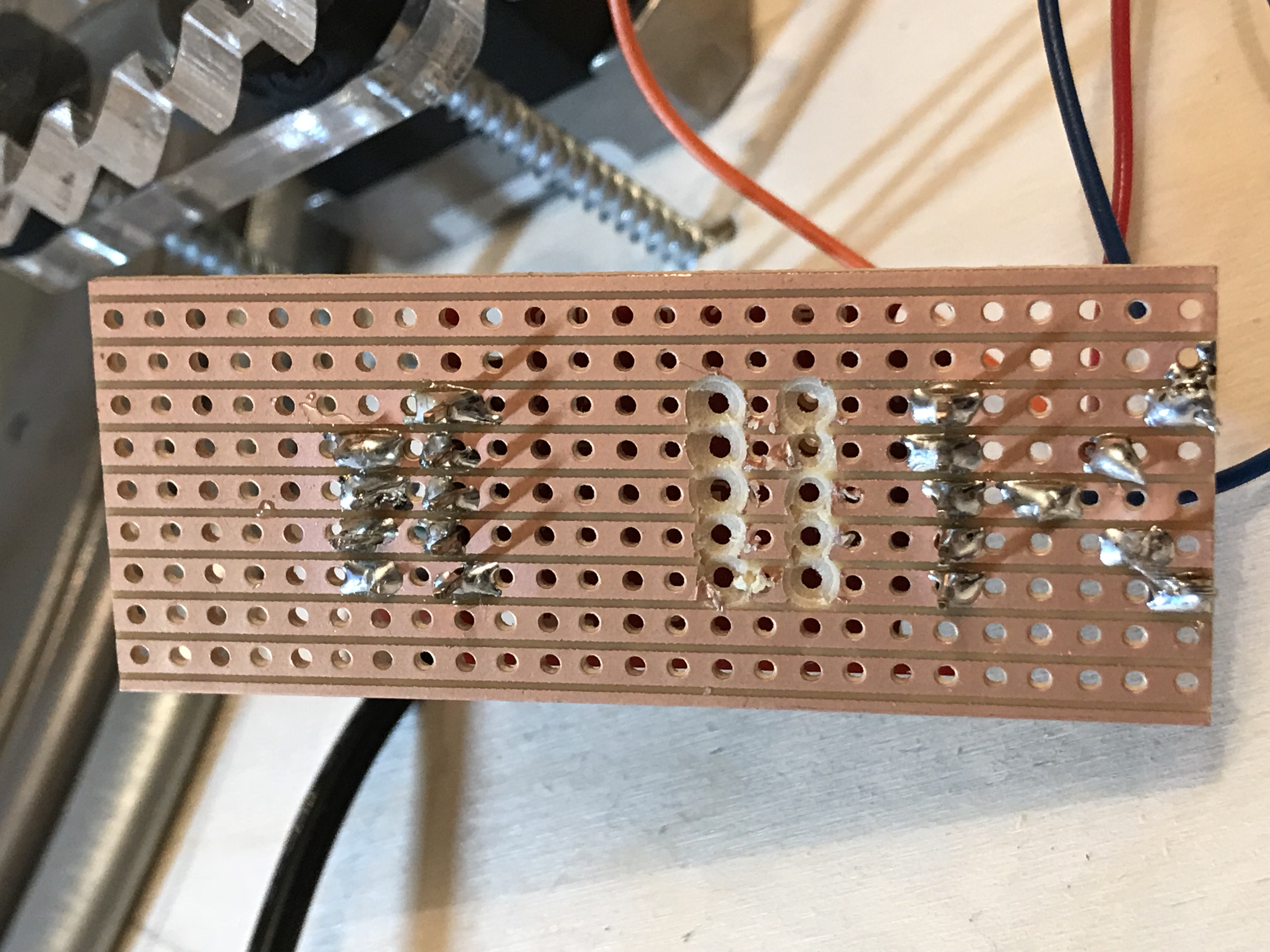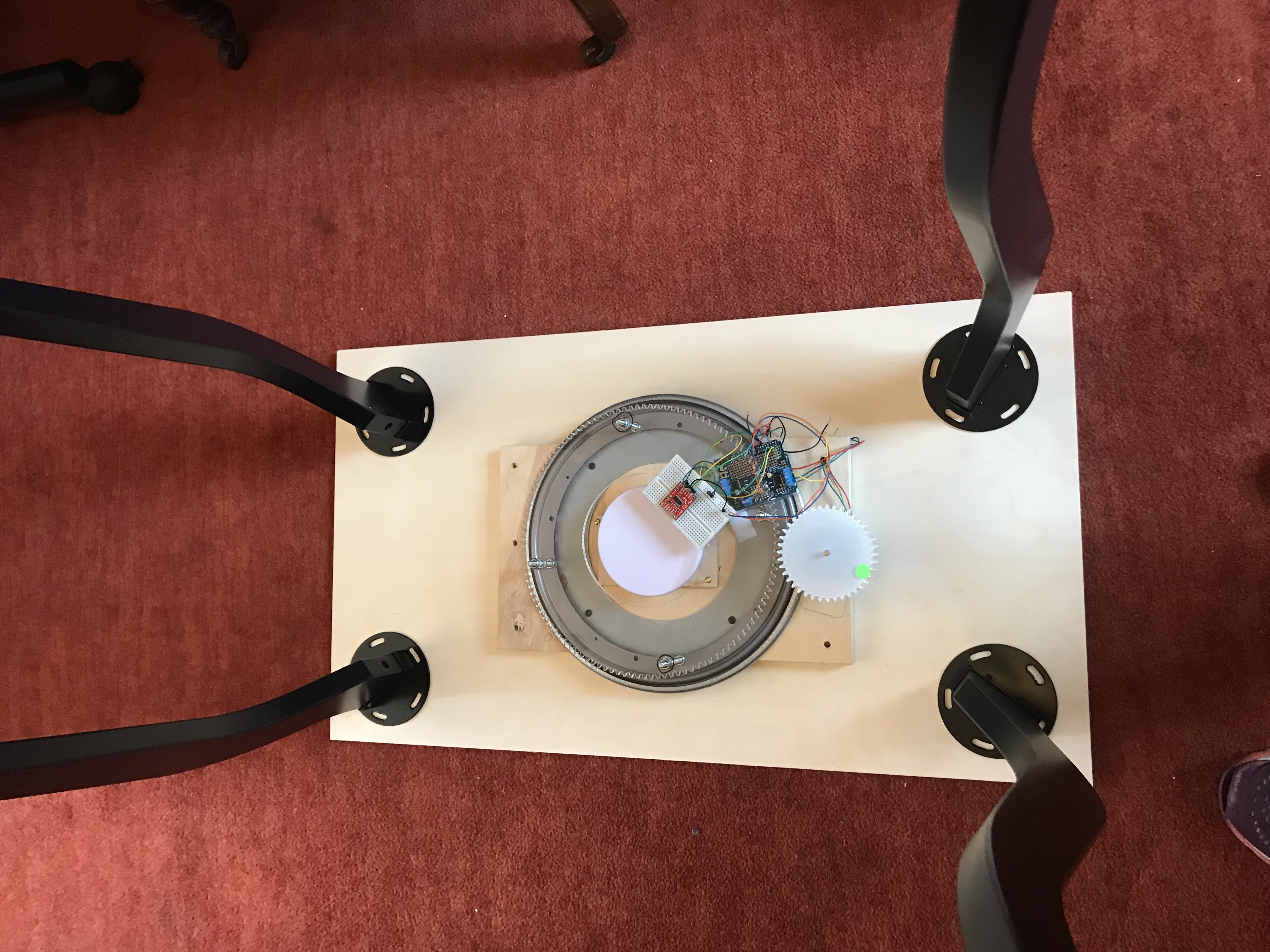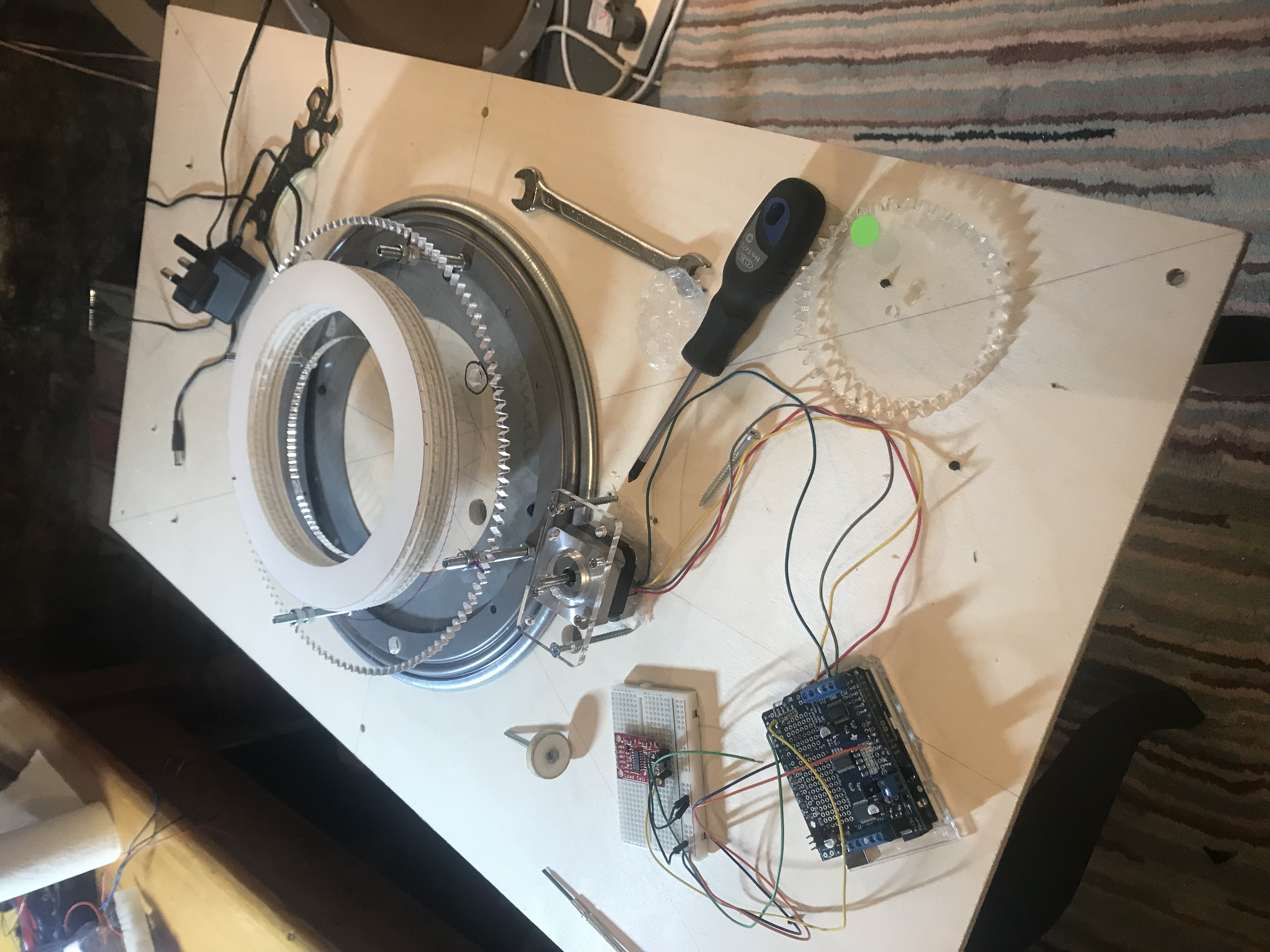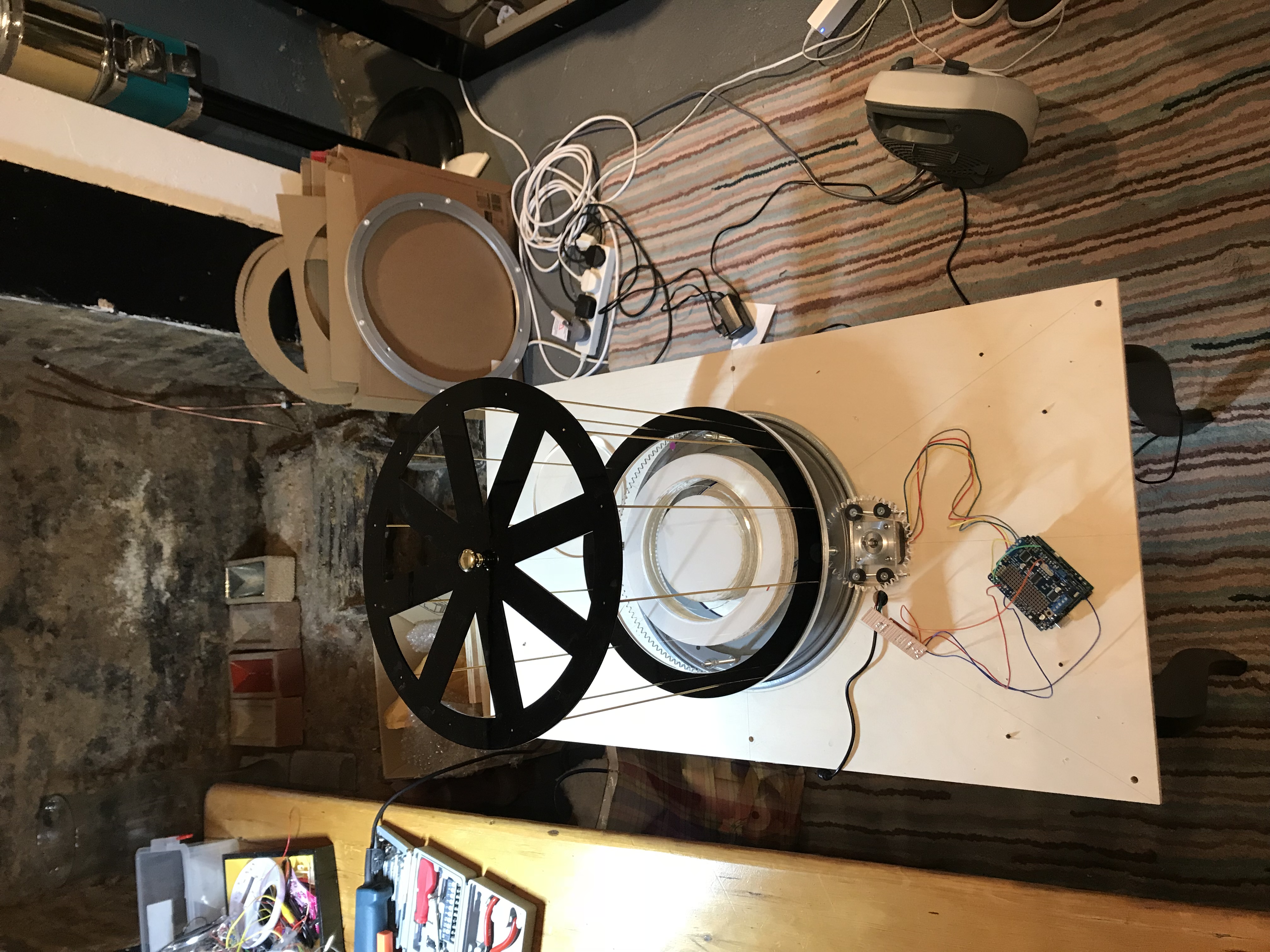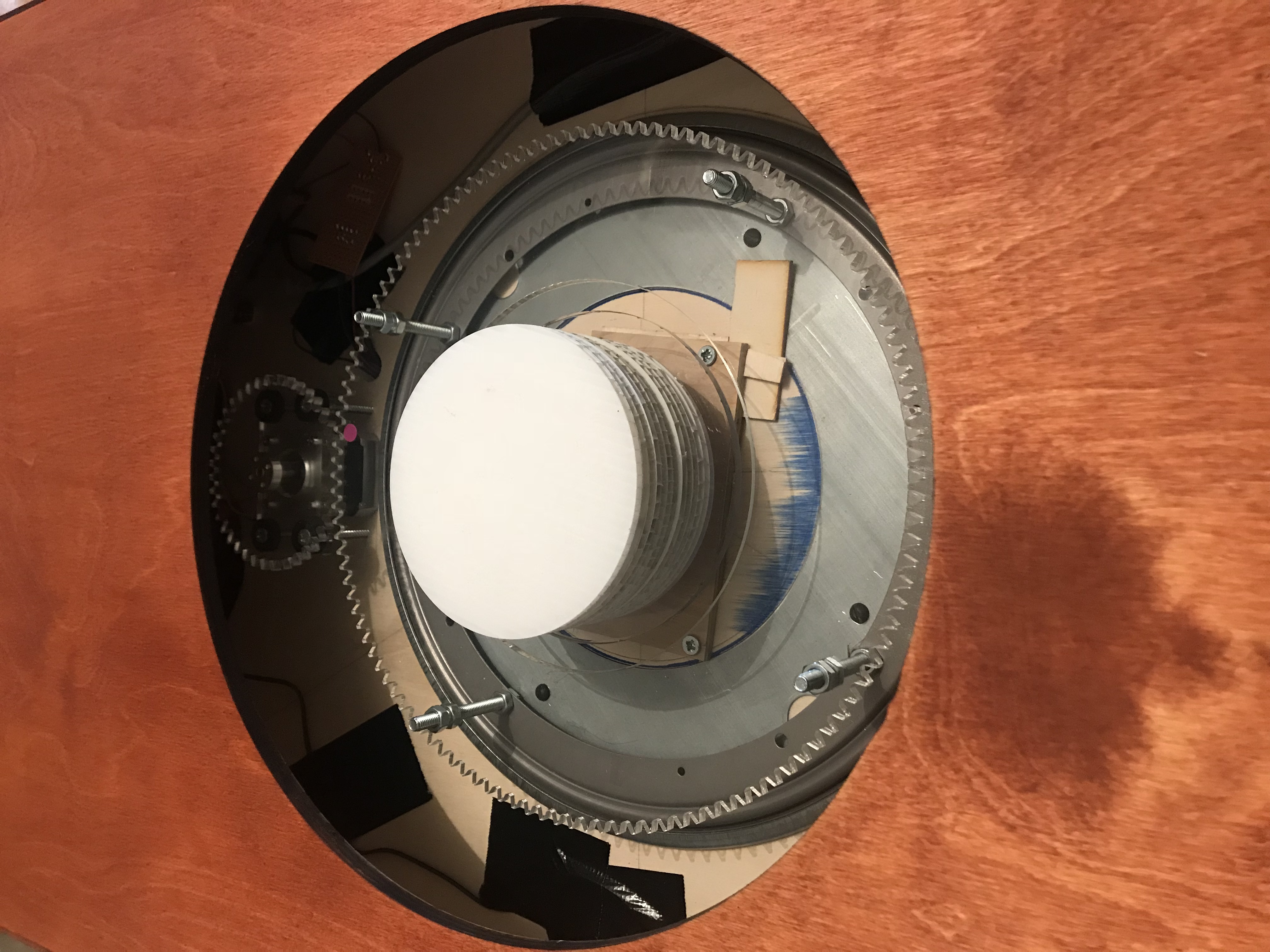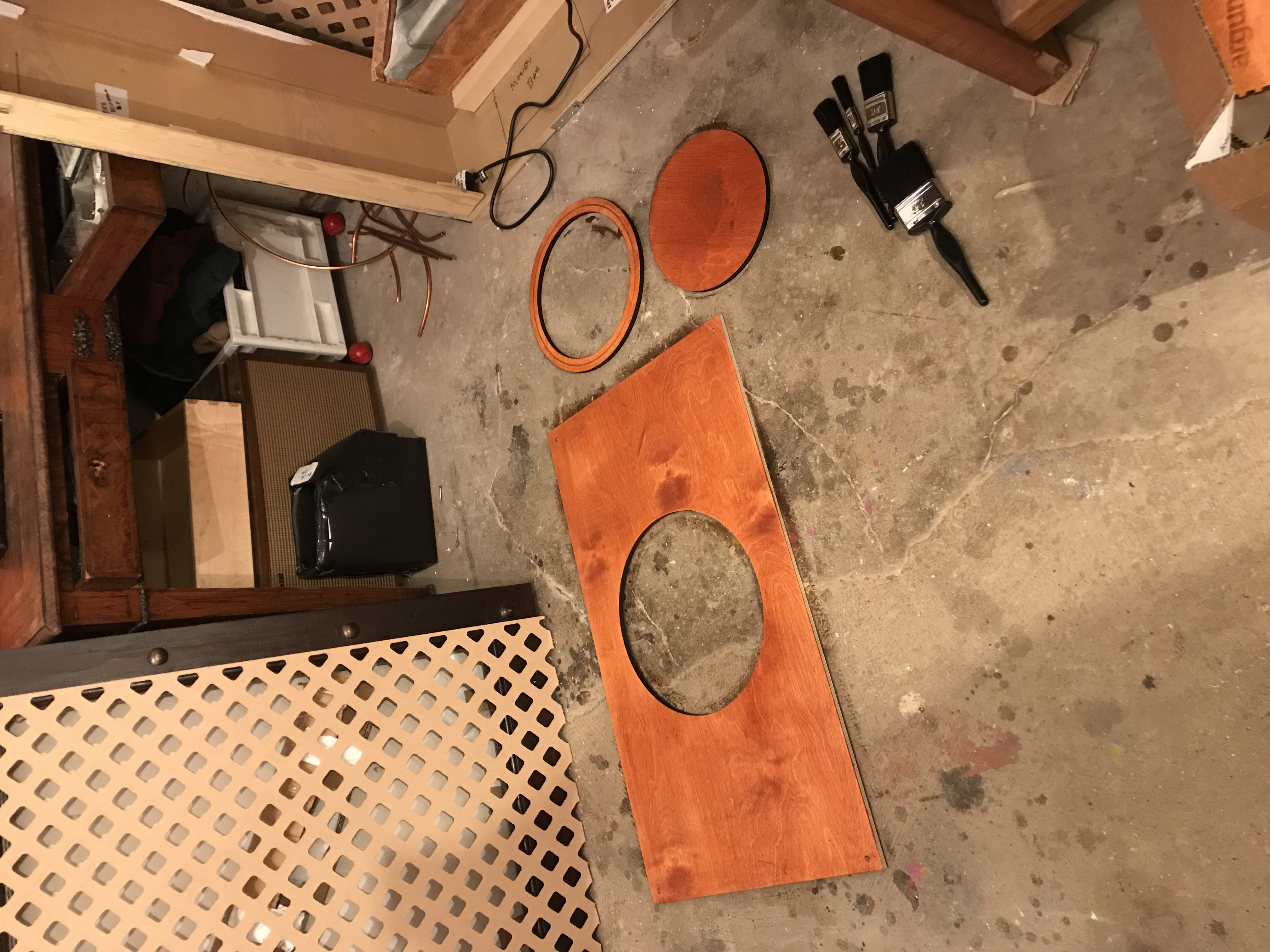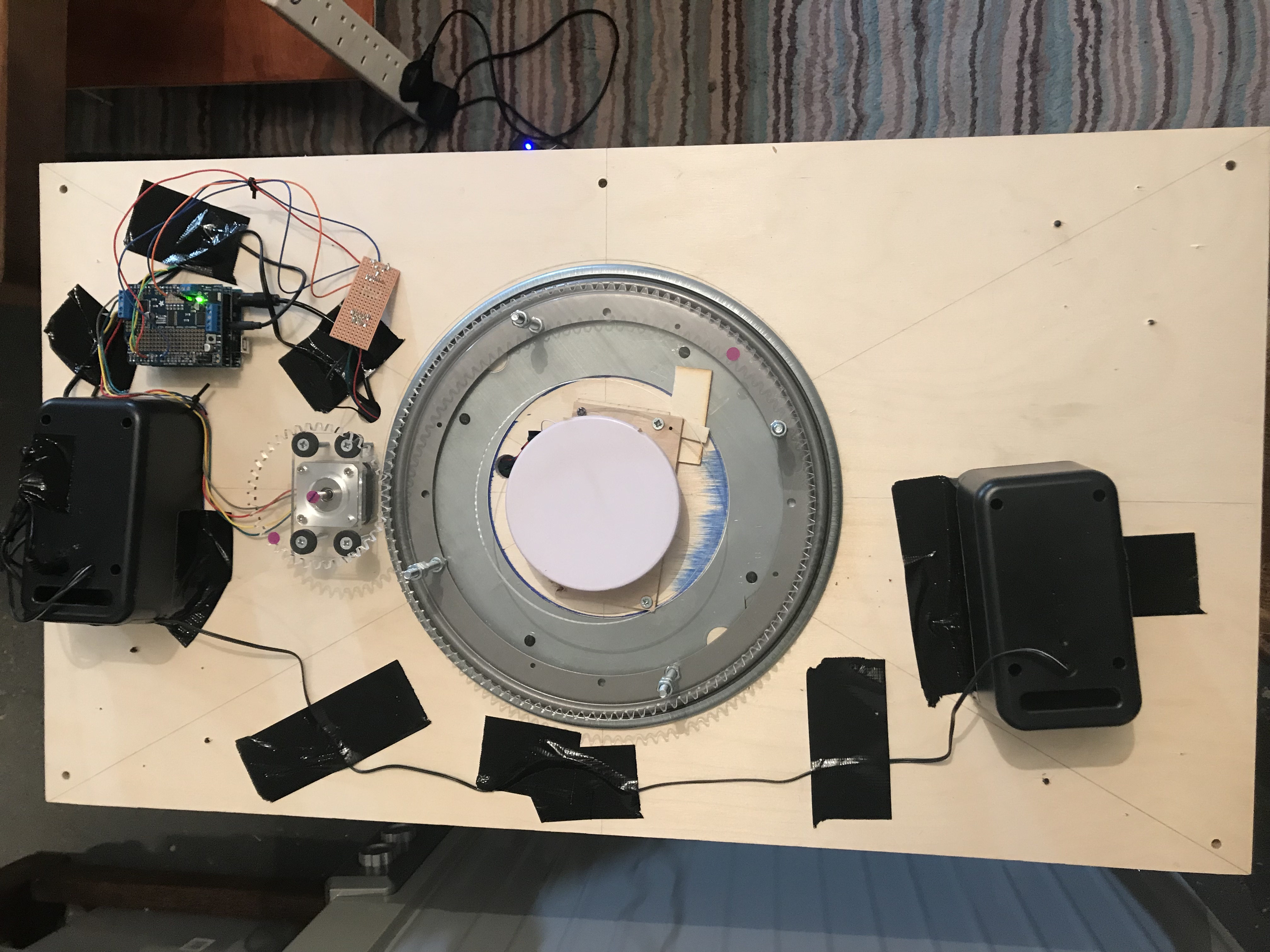The Outspoken Crisp Sharer
Slow eater? Worried about getting your fair share? Do you have a greedy partner/friend? We have a solution for you! The Outspoken Crisp Sharer ensures equal portions for everyone. Never leave a crisp sharing event hungry and resentful again.
produced by: Jesse Wolpert
The Idea
Following on from The Argument Box, this machine is the second in a series entitled “Formalising the Informal”. Each machine in the series takes a process that occurs in everyday life, in an unstructured organic way, and attempts to reimagine it in a structured environment.
I am a greedy person and I love crisps; when there is a bowl of crisps in front of me I always take more than my fair share. This machine forces crisp eaters to share a bowl of crisps equitably by only allowing limited access to each person and controlling how many crisps each person can take.
Initially I was interested in ideas of fairness and the humour around the control of the social practice of food sharing. I wanted to investigate the role of the machine as an animate being that is not always neutral and doesn't always react as you anticipate. However as the project developed I became aware of the many different areas that this project touches on.
- Cultural rules around food sharing - the table can contradict or affirm the usual social rules for food sharing.
- Furniture that doubles as an entitity in its own right - the table does not advertise its function but has to be discovered
- Machines with distinct personalities that affect the nature of their interaction.
- Game theory and the ideas around protocols of sharing
- Parental roles and a critique of the methods for promoting good behaviour
There are a number of different ways in which the crisp sharer can be set up to function
- Its personality can greatly affect the user experience. I have experimented with its voice and speech in various guises: a strict parent, a complaining servant, a cajoling game player, a friendly helper.
- Each of the different personalities controls the sharing in different ways: cross words, kind suggestions, punishment and comedy.
- Its decision making process can change the nature of the experience. For example it can be a two player game sharing equally, or a two player game with bias for one player, or a one player game restraining you from eating too much.
Having made the Outspoken Crisp Sharer I now feel there is a lot of scope for using this machine to explore ways in which people interact with its different personalities and behaviours to understand better the feelings surrounding the act of sharing.
How To Use It
- When an empty bowl is placed on the centre of a table, the sharing begins
- The Outspoken Crisp Sharer asks people to fill the bowl with crisps
- When the bowl is full the first person may take a crisp through the single opening of the cage
- The cage is then turned to face the next person who may take the same number of crisps or more
- This continues until all the crisps are finished
- The Outspoken Crisp Sharer has a variety of personalities and decision making processes
How It Works
- At the centre of the table is a sensitive weighing scale
- The table is silent until a bowl is placed in its centre
- The table interacts with the particpants through speech.
- It moves its cage around the bowl. Depending on what happens on the scale it can:
- Start the sharing once its bowl is full
- Check how many crisps are taken compared to the previous turn and move the cage accordingly
- Finish the sharing once the bowl is empty
- Request for its bowl to be filled
Design Consideration
I deliberately wanted this machine to have an interaction that was 'natural' and intuitive with the user. I intended that the speech of the machine should guide the interaction and the machine should be in charge of the action. As a result of this I have built the table to look like a beautiful piece of furniture that does not advertise its true use. It is only once a bowl is placed on it that the user becomes aware of its abilities. The interaction with the table is a learning process as the user is unaware of the rules until the interaction starts and its actions become apparent.
The actual build was complicated by the fact that only the outer circle of the table should turn, and the inner plinth for the bowl should remain still. This was achieved by finding a lazy susan with a larger enough centre to fit the scales that would support the central plinth. The stepper motor was also problematic as I could not find a suitable bracket and had to laser cut a custom one to attach it to the table. Stepper motors are renowned for their whining noise - but I combatted this by cushioning it above and below with rubber washers. The table required two layers in order to house the all the machinery to manage and turn the outer circle with the cage on it. It was built from laser cut ply, that I painted with wood stain, and table legs from Ikea. The crisp cage is made from laser cut acrylic and brass rods. The rods are pushed through the bottom of the cage to create an area to sit inside the channel etched on the anulus of the table so that the cage cannot slip around when the motor turns.
The original design is shown here:
The Circuit
I recycled an old weighing scales to obtain the load cell inside it. I connected the load cell to a load cell amplifier in order to obtain measurable readings from my load cell. I used a motor shield to control my stepper motor and added a 12v power supply for it. I also stacked a music maker shield with an sd card for the voice of the table. I was aware of possible pin clashes between the shields and the load amplifier, but by adjusting the pins used by the load cell amplifier I was able to avoid any problems. I intentionally did not use any other sensors as I did not want the look of the table to be compromised in any way. Therefore the weighing scales is the only sensor and its data is used to control all the interactions of the crisp sharer. The music shield is attached to a speaker with a volume control that can be accessed through a hole beneath the table.
Future development
I would like to spend some time interacting with the Crisp Sharer and the public to monitor people's interaction with and responses to the machine. I would be interested to see how the machine's different personalities and methods affect the type of experience a user might have.
I would also want to work with the Crisp Sharer in a performance type environment where I am one of the sharers and am able to have some control over the machines personality and actions during the performance.
References
https://learn.adafruit.com/adafruit-music-maker-shield-vs1053-mp3-wav-wave-ogg-vorbis-player/play-music
https://learn.sparkfun.com/tutorials/load-cell-amplifier-hx711-breakout-hookup-guide?_ga=2.76064925.94221118.1522338032-18855425.1522338032
https://learn.adafruit.com/adafruit-motor-shield-v2-for-arduino
http://geargenerator.com/
https://en.wikipedia.org/wiki/Unscrupulous_diner%27s_dilemma
https://www.parents.com/toddlers-preschoolers/development/social/ways-to-teach-sharing/
https://en.wikipedia.org/wiki/Fair_division
The Process
A gallery of images showing the process of making the Outspoken Crisp Sharer.

































































